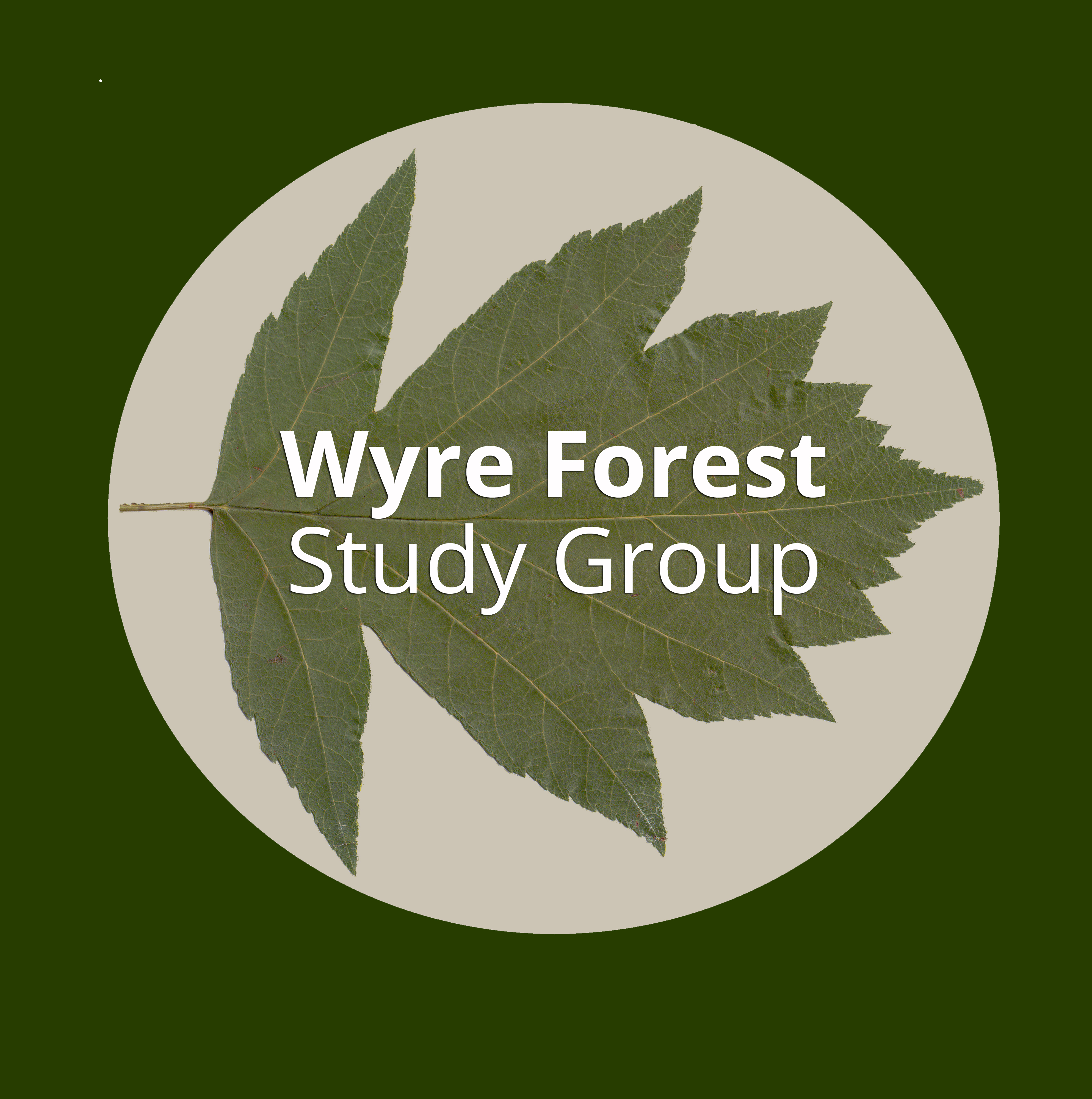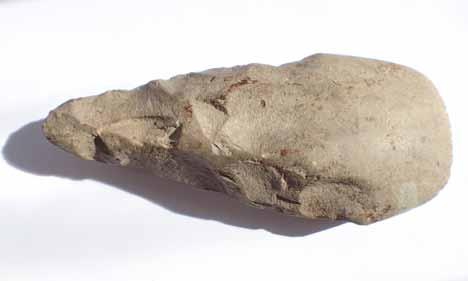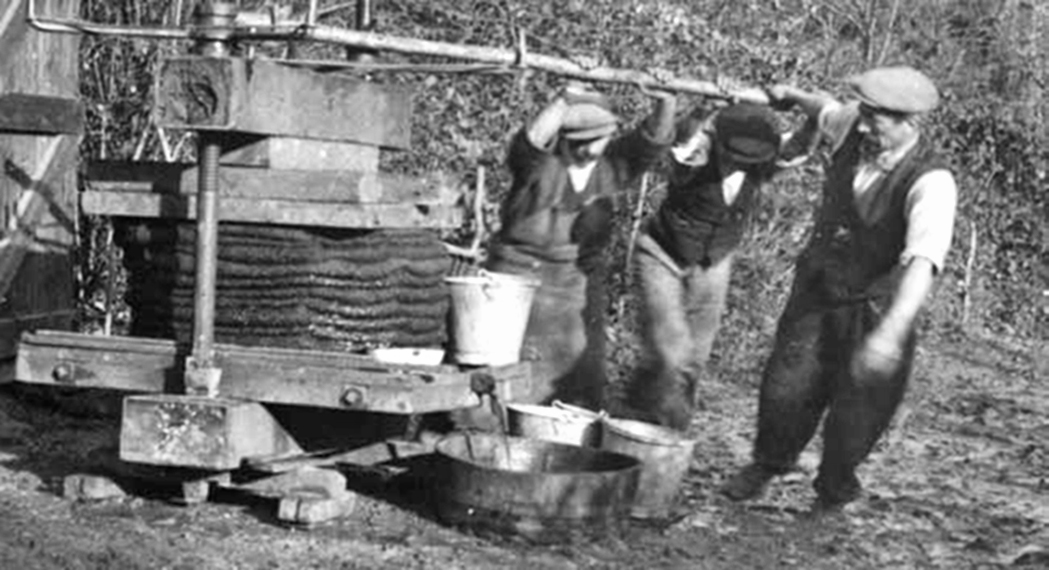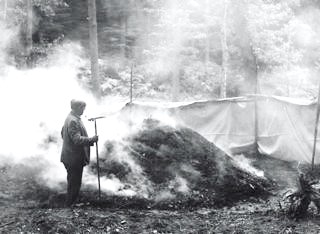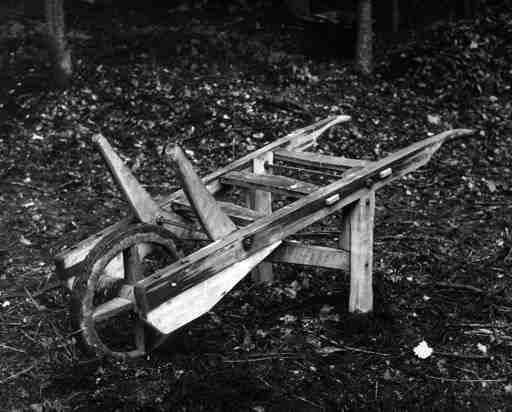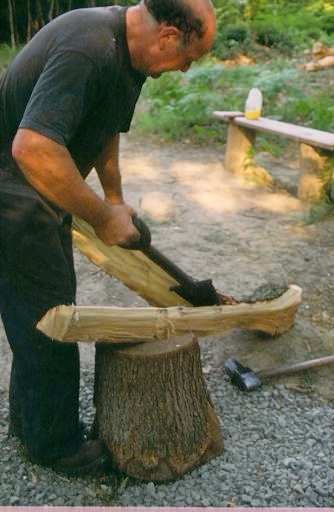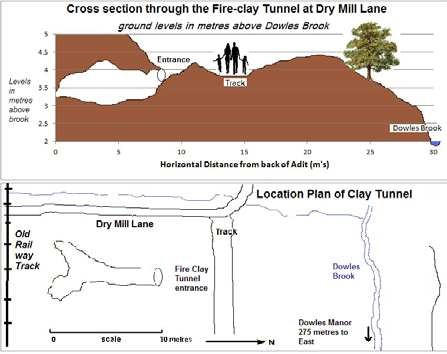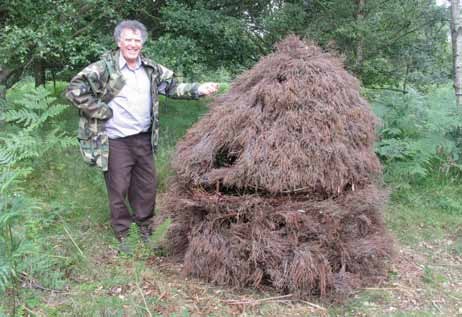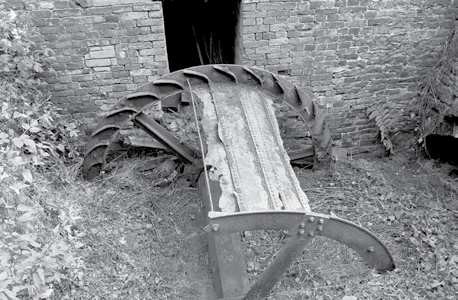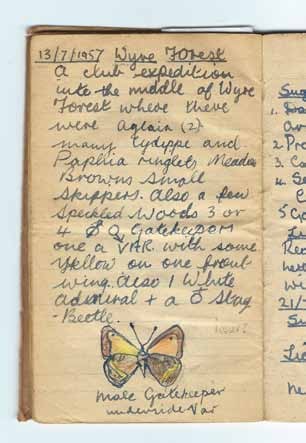Wyre Forest Study Group – Historical articles
(Note – PDF articles may not display correctly in FireFox web browser)
Forty Years of Recording Rainfall at Kidderminster – Mike Averill
Recording rainfall is an important part of weather forecasting and relies on records from around the country. Mike Averill relates his experiences over forty years with some interesting anecdotes.
Wyre Forest Station, Furnace Mill and Arley
An historical report from the records of the Worcestershire Naturalists Club of a visit to Wyre Forest Station, Furnace Mill and Arley.
Burlish Meadows – Peter Freeman
Following a WFSG field trip to Burlish Meadows, Peter Freeman was inspired to pen this poem.
Trees and Rural Geography – Ewan Anderson
Ewan Anderson’s drawings of trees in Wyre have appeared in the REVIEW in 2020 and 2021, he he describes his career and his enthusiasm for trees.
Wayside Trackside – John Cox
John Cox how he became interested in the natural world, railways and woodlands.
Wyre Forest Station to Bewdley, Fourth Half-day Walk, Thursday, 18th July 1895
Continuing our popular series of historical articles from the 19th century, this article (reproduced here with permission from the Worcestershire Naturalists’ Club) provides an intriguing insight into the observations and records of club members as they explored parts of the Wyre Forest and its wildlife close to 130 years ago.
(From Wyre Forest Study Group REVIEW 2020)
Lifelong Fascinations – a journey through natural history – Rosemary Hill
‘Are field naturalists born or made?’ This is a question that Rosemary Hill has pondered in the past, especially with a view to her own passion and interest in natural history. Here she recalls some cherished memories from her own childhood that helped to lay the foundations for her professional career and the series of events and encounters that led to her specializing in the study of molluscs.
(From Wyre Forest Study Group REVIEW 2019)
More from the Museum on Historic Worcestershire Beetles – Mike Bloxham
Following an earlier talk on Entomology Day by Peter Shirley and Mike Bloxham on the subject of the insect collections at Birmingham Museums, readers will be aware that a project to discover the extent of Worcestershire beetle specimens there has been in progress. In this article, Mike and Lukas Large explain their recent conclusions based on re-examining some of the available data and records.
(From Wyre Forest Study Group REVIEW 2019)
John Meiklejohn (1926 – 2019)
Harry Green and John were firm friends for many years and here, Harry recalls some of his fond memories of John Meiklejohn who was for many years a member of the Wyre Forest Study Group. As one of the founding members of the Worcestershire Biological Records Centre, John’s passion and expertise as a naturalist became widely known as did his talent for making delicious homemade wine!
(From Wyre Forest Study Group REVIEW 2019)
Stourport, Stagbury Hill, Ribbesford Wood, Winterdyne & Bewdley – Monday, 28th October 1878
This article was first published in the Transactions of the Worcestershire Naturalists’ Club 1847-1896 and is reproduced here with permission from the Club. It provides a fascinating opportunity to step back in time to 1879 to catch a glimpse on how a meeting of the Worcestershire Naturalists’ Club took place and was recorded.
(From Wyre Forest Study Group REVIEW 2019)
Evolution of a Biologist – Brian Stephens
(From Wyre Forest Study Group REVIEW 2018)
The early prehistoric landscape & material culture of Wyre & its Environs: the significance of selected flint artefacts – Adam Mindykowski
(From Wyre Forest Study Group REVIEW 2018)
Remembering Dr Don Goddard 1947-2000 – Ann Goddard
(From Wyre Forest Study Group REVIEW 2018)
The Earthquake of October 6th 1863 – Mike Averill
(From Wyre Forest Study Group REVIEW 2018)
Remembering Frank Lancaster – Paul Walker
(From Wyre Forest Study Group REVIEW 2018)
From Flowers to Mountains to Forest – Rosemary Winnall
There is a great deal of truth in the saying: “We are the total sum of our experiences”. Rosemary Winnall explains how she is able to trace back to events in her childhood that have helped to influence and develop her tireless passion
(From Wyre Forest Study Group REVIEW 2017)
Visit to Wyre Forest Whole Day Meeting, Thursday, June 13th, 1918 – with thanks to Paul Reade
This article was first published (as it appears here) in the Transactions of the Worcestershire Naturalists’ Club 1918 and is reproduced with permission from the Club. It provides a fascinating glimpse into a field trip visit to the Wyre Forest by one of the country’s reputedly oldest Natural History Group. With thanks to Paul Reade
(From Wyre Forest Study Group REVIEW 2017)
The Sorb Tree Song or the Whitty Pear Song – Mike Smith
The Sorb Tree, Whitty Pear, Quicken Pear, or True Service (Sorbus domestica L.) has a long history in the Wyre Forest. The story involves many mysteries and intrigues not to mention tales of arson. Although well documented, Mike Smith, in a flash of inspiration, decided to put the tale to music and lyrics. And so was born the Sorb Tree song!
(From Wyre Forest Study Group REVIEW 2017)
The Goblets made from the original Whitty Pear – Mike Averill
In the many articles about the Wyre Forest Whitty Pear
(From Wyre Forest Study Group REVIEW 2017)
Snow, December 2017 – Rosemary Winnall and Mike Averill
In December 2017 Storm Caroline was followed by a cold wintry spell between the 8th and 16th of the month which brought widespread frosts and large amounts of snow to the Midlands. Photographic evidence from Phil Rudlin and John Rhodes supports the impact that these unusual weather conditions had around the Wyre Forest area, as recorded by Rosemary Winnall and Mike Averill.
(From Wyre Forest Study Group REVIEW 2017)
George Jorden (1783-1871). An Appreciation – Mike Averill
Anyone interested in the natural history of the Wyre Forest area will have heard of those who have made a contribution to the knowledge of the area, thinking of Norman Hickin and Neville Wilde. One name from the nineteenth century, George Jorden, may not be so well known. Mike Averill provides an insight into the significant contributions that George Jorden has made to the Natural History of the Wyre Forest.
(From Wyre Forest Study Group REVIEW 2017)
Tree Fruit Growing in Britain: an outline of developments in the 17th century – Brian Stephens
Brian documents the search for new fruit varieties and the development of orchards in the 17th century.
(From Wyre Forest Study Group REVIEW 2016)
Rosemary Hill celebrates the life of Ron Boyce, a dedicated naturalist with a special interest in conchology.
(From the Wyre Forest Study Group REVIEW 2016)
Far Forest Recollections 1840 – George Griffith
This article is an excerpt from: ‘Going to Markets and Grammar Schools being a series of Autobiographical Records and Sketches of Forty years spent in the Midland Counties from 1830 to 1870’. Volume I by George Griffith (Freeman, London 1870) Chapter VII.
(From the Wyre Forest Study Group REVIEW 2016)
Naturalist, author and artist Mike Bloxham writes about how he became interested in natural history, and developed his passion for entomology.
(From the Wyre Forest Study Group REVIEW 2016))
Started in 1991 by Peter Hobson and a few local naturalists, the Wyre Forest Study Group has gone from strength to strength. Rosemary Winnall documents its development.
(From the Wyre Forest Study Group REVIEW 2016))
Dave recalls how his interest in wildlife began as a child and continued into adulthood.
(From the Wyre Forest Study Group REVIEW 2015))
This article was originally published in the Transactions (2nd series, Vol. 1, 1889, pp 285-293) of the Shropshire Archaeological and Natural History Society and is reproduced here with permission from the Society.
(From the Wyre Forest Study Group REVIEW 2015))
Roy Mantle sadly passed away during 2015 and this article celebrates his life and a few of his achievements.
(From the Wyre Forest Study Group REVIEW 2015))
Eliot Howard (1873-1940), through his studies of birds on Hartlebury Common, he helped our understanding of their territories. Around the same time, his friend Edgar Chance discovered the secret of the Cuckoo at Pound Green Common.
(From the Wyre Forest Study Group REVIEW 2015))
Photographs show the Veevers family standing on the frozen Dowles Brook near Oak Cottage in February 1985
(From the Wyre Forest Study Group REVIEW 2014))
Historical photographs show the splendid lime avenue leading from Ribbesford Church, and its demise.
(From the Wyre Forest Study Group REVIEW 2014))
This article has been reproduced with permission of the Woolhope Club which has been active in and around Herefordshire since 1851.
(From the Wyre Forest Study Group REVIEW 2014))
Norman Hickin’s obituary is reproduced here by kind permission of the Royal Entomological Society, and it first appeared in the society’s publication ANTENNA vol. 15 April 1991.
(From the Wyre Forest Study Group REVIEW 2014))
John has been interested in wildlife and photography since childhood and he writes about how this all developed.
(From the Wyre Forest Study Group REVIEW 2014))
Brian describes the history of the cherry fair in Bewdley, the past importance of the fruit industry locally and how the Cherry Fair has been revived in 2013.
(From the Wyre Forest Study Group REVIEW 2013))
The arboretum in Wyre was established by the Wyre Forest Society in 1983 in conjunction with the Forestry Commission, and its development is described in this article.
(From the Wyre Forest Study Group REVIEW 2013))
Bewdley Forest by W.G. Blatch 1879
This is a combination of two articles that appeared in The Midland Naturalist as one of the author’s Entomological Rambles in the Midlands. It provides an insight into how rich the Wyre Forest was in days gone by. Notes from three modern entomologists detail the current status of species mentioned in the 1879 text.
(From the Wyre Forest Study Group REVIEW 2013))
Harry tells us how he first became interested in natural history and how this led him to become a lifetime amateur naturalist, bird ringer, and wildlife conservationist.
(From the Wyre Forest Study Group REVIEW 2013)
The Author describes the life of John Rea from Norton’s End, Kinlet. This 17th century plantsman spent over 40 years collecting and cultivating garden plants and fruit trees, amassing a large collection and publishing books about his work.
(From the Wyre Forest Study Group REVIEW 2012))
The Worcestershire Naturalists’ Club walked from Arley on 15th May 1863 looking at geological features, plants and insects, and their finds are described. This article is printed with permission from the Worcestershire Naturalists’ Club.
(From the Wyre Forest Study Group REVIEW 2012))
The Reverend Lea, vicar of Far Forest between 1822 and 1899 collected curiosities of nature, several of which are described here.
(From the Wyre Forest Study Group REVIEW 2012))
Following the 2007 record breaking event, Mike describes another summer storm that resulted in severe flooding around the Wyre Forest on 13th July 2012. The article is illustrated with some examples of the flood damage.
(From the Wyre Forest Study Group REVIEW 2012))
Dr. Cedric Quayle describes the original Whitty Pear tree in Wyre and documents the presence of a small building close by. Worcestershire County Council mapped and recorded the ruins in 1989 and this article first appeared in Worcestershire Archaeological and Local History Newsletter no. 42 in November 1990.
(From the Wyre Forest Study Group REVIEW 2012))
Rosemary describes the history of the Snuff Mill near Bewdley. The article is illustrated with a photograph of the old Snuff Mill in Snuff Mill Dingle.
(From the Wyre Forest Study Group REVIEW 2012))
The Fire-clay Tunnel near Dowles Manor – Mike Averill
Documenting the survey made of this tunnel in 1992, during a search for bat hibernacula, Mike Averill notes the importance of the Dowles Valley for industry in years gone by.
(From the Wyre Forest Study Group REVIEW 2011)
This article includes a transcription of an account of the damage to trees in Bewdley and Ribbesford after the hurricane on 6 July 1845.
(From the Wyre Forest Study Group REVIEW 2011)
The author discusses the meaning of the word shides used historically in the descriptions of coppice products.
(From the Wyre Forest Study Group REVIEW 2011)
The History of Far Forest – William Elliot
This article was originally written by the Reverend William Elliot in 1978 whilst he was vicar of Far Forest Church. It includes information about the work and trade of the village inhabitants, local customs and dialect, descriptions of some of the old buildings and village benefactors.
(Recently reprinted, with some small revisions, in the Wyre Forest Study Group REVIEW 2011))
This article describes a walk in the Wyre Forest in 1862 by a group of naturalists interested in the geology, history
(From the Wyre Forest Study Group REVIEW 2011))
Coppicing in the Manor of Bewdley 1741-1771 – Brian Stephens
This article includes records from ‘A Survey of the Manor of Bewdley’ in 1749 giving an insight into
(From the Wyre Forest Study Group REVIEW 2011))
Edmund Pitt (1613-1688) and Sorbus domestica in Wyre Forest – Frank Horsman
Dr. Frank Horsman provides a brief biography of Edmund Pitt and quotes from one of his letters written in 1678 describing his discovery of Sorbus domestica in the Wyre Forest.
(Originally written for the Botanical Society of the British Isles NEWS in January 2000 and recently in the Wyre Forest Study Group REVIEW 2010)
Freezing Conditions on the River Severn, December 2010 – Mike Averill
Notes times in the past when some of our rivers have frozen over completely, Mike Averill describes the weather in December 2010 that led up to the River Severn freezing over completely at Bewdley and includes photographs which record this event.
(From the Wyre Forest Study Group’s REVIEW 2010) )
Mill on Dowles Brook and its Tributaries – Tim Booth
This article describes the mills that used to operate in the Dowles Brook catchment with illustrations of what remains today.
(From the Wyre Forest Study Group REVIEW 2010)
Historic Wyre, Friday, 9th
This article describes a walk in and around the Wyre Forest by a group of naturalists interested in the geology, botany
(From the Wyre Forest Study Group REVIEW 2009)
Hedgwick: from Manorial Waste to Forest Community – Stuart Davies
Dr. Stuart Davies describes, from documentary evidence, the two Hedgewick Commons, detached land owned by the Manor of Bewdley. By 1840 the land had become enclosed and know as Far Forest.
(From the Wyre Forest Study Group’s REVIEW 2009) )
The Four Parishes Heritage Group and Research into the Medieval Wyre Forest – David Poyner
Dr. David Poyner provides some background to the Four Parishes Heritage Group that was founded in 2005 to look particularly at the history of the parishes of Highley, Kinlet, Billingsley and Stottesdon. During their documentary
(From the Wyre Forest Study Group REVIEW 2008) )
Orchards in the Manor of Bewdley in 1749 – Brian Stephens
This article describes some of the information documented in ‘A Survey of the Manor of Bewdley in Worcestershire made in the year 1749 for Edwd Winnington Esq by John Ingram’.
(From the Wyre Forest Study Group REVIEW 2008) )
Historic Wyre, Saturday, 30th
This article was first published in the Transactions of the Worcestershire Naturalists’ Club, 1847-1896 and is reproduced with permission from the Club. It describes a walk through the forest with botanists Mr. G. Jordan and Mr. Babington noting finds of importance along the way.
(From the Wyre Forest Study Group REVIEW 2008) )
Fred Fincher 1901-1995 – Mervyn Needham
This article celebrates Fred Fincher’s contribution to natural history recording in Worcestershire and includes photographs of this dedicated naturalist in the field.
(From the Wyre Forest Study Group REVIEW 2008) )
Historic Wyre, Friday, 25th
This is a description of a walk in 1858 from
(From the Wyre Forest Study Group REVIEW 2007) )
The State of the Woods in 1801 – Stuart Davies
Using documentary evidence of a survey and valuation carried out in 1801, Dr. Stuart Davies provides an informative insight into how the Wyre Forest woodland was managed at that time.
(From the Wyre Forest Study Group REVIEW 2007)
Neville Wilde, a Tribute – Rosemary Winnall
Neville Wilde died suddenly on 9th January 2004. He was a founder member of the Wyre Forest Study Group and a
(From the Wyre Forest Study Group REVIEW 2003)
Ruskin, the Guild of St. George and Wyre – Cedric Quayle
Cedric Quayle provides a brief background to John Ruskin’s life and notes how he came to develop links with the Wyre Forest. He describes how the Guild of St. George
(From the Wyre Forest Study Group REVIEW 2003) )
Albert Link and Bark Peeling in the Wyre Forest – Rosemary Winnall
Rosemary talks about Albert Link who was one of the last bark peelers in the Wyre Forest and this illustrated article describes his methods.
(From the Wyre Forest Study Group REVIEW 2003) )
Place Names of the Wyre Forest – Rev. William Elliot
Bill Elliot provides some historical information about Wyre and looks at the derivation of some of the local place names.
(From the Wyre Forest Study Group REVIEW 2001) )
Charcoal Burning in Wyre Forest – Neville Wilde (2000)
Neville Wilde describes a traditional Wyre charcoal burn as seen at the demonstration burn by charcoal burner Joseph Nevey in 1973. This took place on an old charcoal hearth at Callow Hill last used by Mr. Nevey in 1927!
(From the Wyre Forest Study Group REVIEW 2000.) )
A Walk in Wyre 1853 – Worcestershire Naturalists’ Club
A Walk in Wyre, 24th August 1853 – Worcestershire Naturalists Club A walk in Wyre from Mopson’s Cross, along Park Brook and Dowles to Bewdley in the summer of 1853.
(From the Wyre Forest Study Group REVIEW 2006) )
Damsons and Dyeing – Brian Stephens
An overview of damsons used for dyeing in and around the Wyre Forest.
(From the Wyre Forest Study Group REVIEW 2006) )
‘Far Forest’ by Francis Brett Young – Eunice Pritchard
An appreciation of Francis Brett Young’s book ‘Far Forest’ which was written in 1936. Eunice traces the author’s links to the Wyre Forest and documents his concern for its future.
(From the Wyre Forest Study Group REVIEW 2006) )
The Wyre Forest under the Tudors and Stuarts – Stuart Davies
This article sketches in the medieval background to the Royal Forests and, through documentary evidence, provides an insight into what was happening in the Wyre Forest at that time.
(From the Wyre Forest Study Group REVIEW 2006) )
Dr Sargent’s Neolithic polished stone axehead
Rosemary Winnall
Penguin – as drawn by Don Goddard
Ann Goddard
Turning the apple press
Charcoal Burning – Tending the stack
Charcoal burner’s barrow, sometimes called a “mare”
Neville Wilde
Furnace Mill
Tim Booth
Excerpt from Mike Bloxham’s diary
Francis Brett Young
Wood splitting
Gearing, Cooper’s Mill
Neville Wilde
The railway line through the Wyre Forest
Photograph donated by Sue Holmes
Fire-clay Tunnel
Mike Averill
Godfrey Jones with a replica of Edgar Chance’s hide,
Pound Green
Rosemary Whinell
John Robinson’s diary, 1954
John Robinson
Veteran Oak, Birchen Park
A charcoal burner’s cabin
Frozen River Severn – 25 Dec 2010
Mike Averill
The avenue of lime trees at Ribbesford
Mill-wheel at Knowles Mill
Knowles Mill
Dave Scott’s diary – 1957
